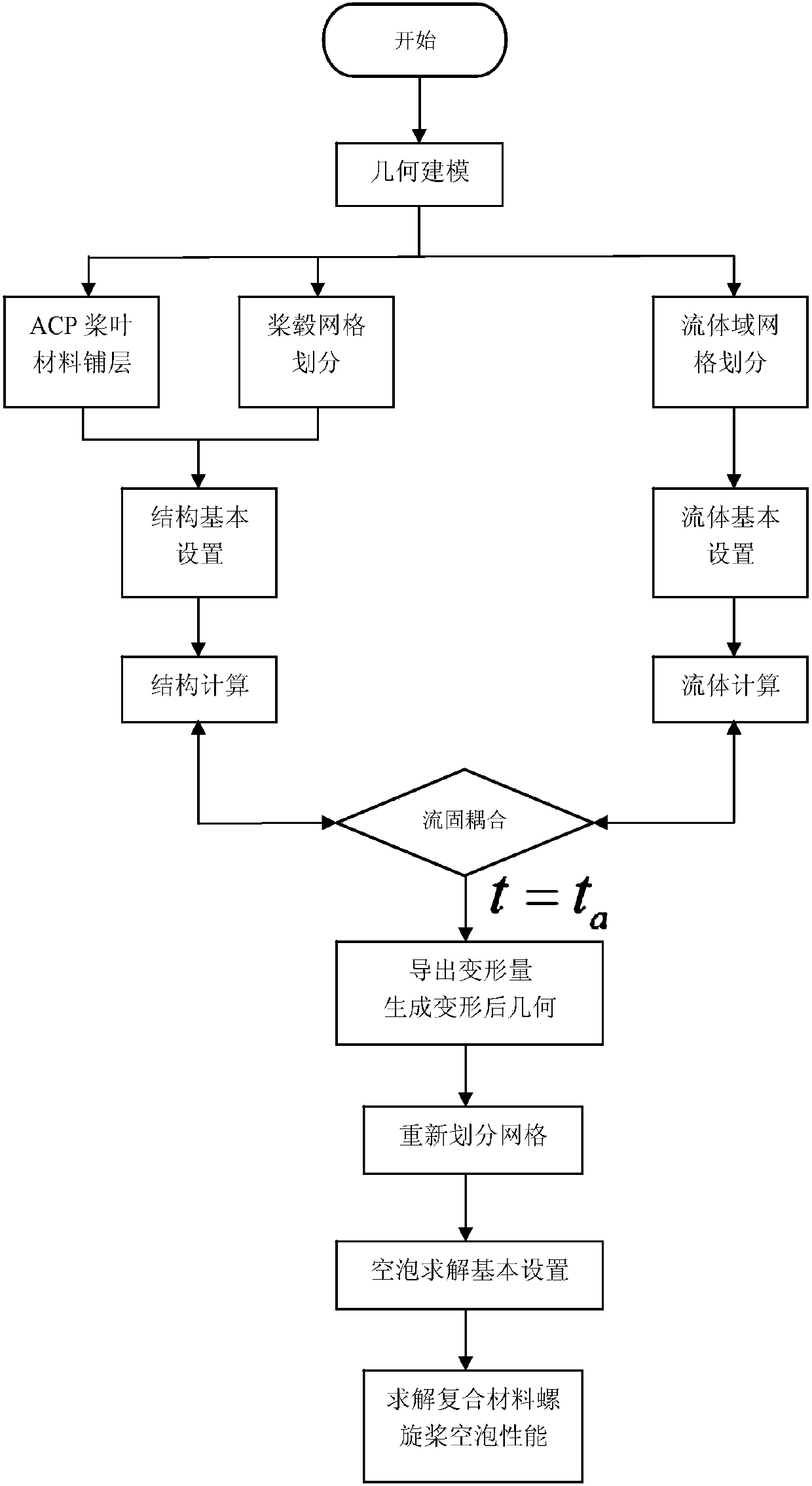A Calculation Method for the Cavitation Performance of Composite Propeller
A composite material and calculation method technology, applied in the direction of calculation, design optimization/simulation, special data processing applications, etc., can solve problems such as reducing propulsion efficiency, affecting the hydrodynamic performance of propellers, affecting the concealment of ships, etc.
- Summary
- Abstract
- Description
- Claims
- Application Information
AI Technical Summary
Problems solved by technology
Method used
Image
Examples
specific Embodiment approach 1
[0020] Specific embodiment one: the calculation method of a kind of composite material propeller cavitation performance of the present embodiment, it realizes according to the following steps:
[0021] Step 1. Use the three-dimensional modeling software CAD to establish the geometric model of the composite material propeller. The coordinate system where the propeller is located is the Cartesian coordinate system. The X axis is taken as the rotation axis of the propeller, and the positive X direction is the incoming flow direction;
[0022] Step 2. Establishing the composite material propeller fluid calculation domain in the meshing software and dividing the mesh;
[0023] Step 3. Fluid basic setting: use computational fluid dynamics software based on RANS equation to establish the solution equation for the hydrodynamic performance of the composite propeller, set the solution parameters, boundary conditions, start the dynamic mesh, and define the composite propeller blade part a...
specific Embodiment approach 2
[0032] Embodiment 2: The difference between this embodiment and Embodiment 1 is that in the step 2, the composite material propeller fluid calculation domain is divided into an outer domain and an inner domain, and the inner domain includes a composite material propeller as a rotating area, and an unstructured grid is used. Division; the outer domain is a static area, which is divided into structural grids; wherein, the composite material propeller fluid calculation domain includes the geometric model of the composite material propeller in step 1.
[0033] Other steps and parameters are the same as those in Embodiment 1.
specific Embodiment approach 3
[0034] Specific embodiment three: the difference between this embodiment and specific embodiment one or two is: the RANS equation in the step three is
[0035]
[0036] Among them, ρ is fluid density, t is time, S i is the generalized source term, p is the pressure, u i is the velocity in the x direction, u j is the velocity in the y direction, u' i is the pulsating velocity in the x direction, u' j is the pulsating velocity in the y direction, x iis the coordinate axis x, x j is the coordinate axis y.
[0037] Other steps and parameters are the same as those in Embodiment 1 or Embodiment 2.
PUM
 Login to View More
Login to View More Abstract
Description
Claims
Application Information
 Login to View More
Login to View More - R&D
- Intellectual Property
- Life Sciences
- Materials
- Tech Scout
- Unparalleled Data Quality
- Higher Quality Content
- 60% Fewer Hallucinations
Browse by: Latest US Patents, China's latest patents, Technical Efficacy Thesaurus, Application Domain, Technology Topic, Popular Technical Reports.
© 2025 PatSnap. All rights reserved.Legal|Privacy policy|Modern Slavery Act Transparency Statement|Sitemap|About US| Contact US: help@patsnap.com


